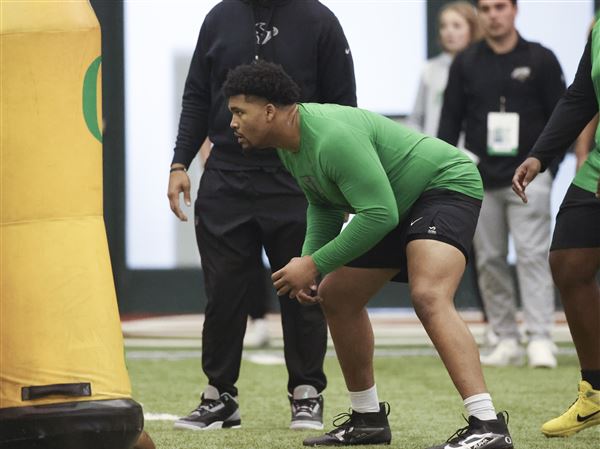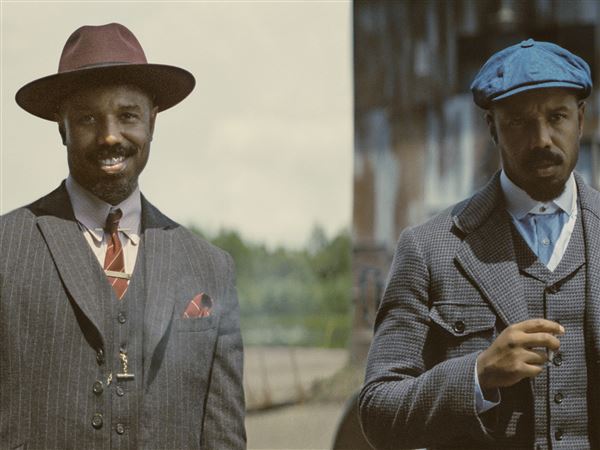Evaluating talent in baseball often adds up to an educated guess.
Scouts watch a teenager and assign numerical grades to his skills based on his potential and how his body might develop. The team makes a multi-million dollar bet that this teenager someday will be a major league baseball player. Then coaches and instructors imagine what he could accomplish and devise plans to get him there.
In an era when the best free agents receive nine-figure contracts and increased television revenue turns luxury tax into the equivalent of a parking ticket, developing that player is increasingly important. If the Pirates continue to operate with a payroll that consistently ranks in the bottom third in Major League Baseball, they need to excel in player development to compete on the field with the rest of the league.
Since the current front office took over after the 2007 season, the Pirates have invested tens of millions of dollars in signing bonuses, hiring more scouts and instructors, and improving facilities, such as the training complex in the Dominican Republic that opened in 2009.
Their system has kept pace with its competitors. But is that enough?
"We've made some mistakes along the way," general manager Neal Huntington said. "We'd be the first ones to acknowledge that, maybe acknowledge it too much. We do believe we've also done some really good things."

PG graphic: Charting the Future ... A look at the Pirates chain of command
(Click image for larger version)
The math is simple. Rather than spend $125 million over five years to sign Josh Hamilton, like the Los Angeles Angels did this winter, the Pirates spent $5 million to sign Josh Bell after selecting him in the amateur draft. When Bell reaches the major leagues, the Pirates control his rights for six seasons, the first three at the league minimum salary and the final three at a salary determined by arbitration.
Scouts, supervisors and cross-checkers parse the tens of thousands of high school and college players in the United States, plus the young players in Latin America and Asia, to find the type of talent who can provide a return on such an investment. It requires the happy marriage of a keen baseball eye and objective analysis. It also requires luck.
The system's foundation
Many aspects of the Pirates' process originated in Cleveland. Huntington began his tenure as the Indians' assistant director of minor league operations on Oct. 20, 1997. A day later, the Indians allowed seven ninth-inning runs and lost Game 3 of the World Series to the Florida Marlins.
The Indians' improvement from a 57-105 record and last-place finish in 1991 to two World Series appearances and five consecutive first-place finishes coincided with the tenure of John Hart, the Indians general manager at the time and now a senior adviser with the Texas Rangers. Hart's Indians front office produced an impressive family tree. In addition to Huntington, Colorado Rockies GM Dan O'Dowd, San Diego Padres GM Josh Byrnes, Indians president and former GM Mark Shapiro and current Indians GM Chris Antonetti all worked for Hart in Cleveland. Paul DePodesta, the New York Mets' vice president of player development and amateur scouting and a former Los Angeles Dodgers GM, began his career as an Indians scout.
"There were some things that I grabbed a hold of and thought to myself, if I ever got a chance to run a player development system, this would be something I'd implement," Huntington said.
Huntington took the Pirates job in September 2007 and brought members of the Indians staff with him. Kyle Stark, the assistant farm director in Cleveland and now a Pirates assistant GM, became the Pirates' director of player development. Indians scout Jim Benedict joined the franchise as a special assistant to Huntington. They imported some, but not all, parts of the Indians' system.
"I think as far as having a specific plan overall for the system, a specific plan for each player, I'd say those are probably the biggest things from [the Indians]," Stark said.
Creating major league baseball players starts with the scouting staff, the first people to see potential draft picks in person and recommend them to their bosses.
"If they're not getting you quality players, it doesn't matter how good your coaches and your managers or instructors are, because you can only coach a guy up so much," said John Vuch, farm director for the St. Louis Cardinals. "If they give you good players, you're going to develop better players."
"It's not just about talent," Huntington echoed, "but that talent has to be the foundation."
The man in charge of that department for the Pirates, assistant GM Greg Smith, spent 11 seasons with the Detroit Tigers. He served as the Tigers' director of scouting from 1997 to 2004 before becoming a special assignment scout. He was the Pirates' director of scouting for four seasons before Huntington made him an assistant GM.
For those four seasons, before the new collective bargaining limited draft spending, the organization provided Smith and his staff with the money they needed to sign as many players as possible. The $52 million the Pirates spent on signing bonuses in the draft between 2007 and 2011 exceeded the spending of every other team in baseball during that time, according to Baseball America. The current front office spent $47.6 million on its first four drafts, including a record $17 million in 2011.
The system's core
The willingness to spend heavily in the draft represented the first major step in the Pirates' attempt to develop players. Once those players joined the system, the organization impressed upon them the tenets that Huntington, Stark, director of minor league operations Larry Broadway and others cited as founding principles: Excellence is excellence. Individualized instruction. Develop as a person as well as a player.
"You have to have a mission statement, purpose, cause, however you want to describe it, that really is the heart of why the organization exists," Broadway said.
The Pirates sought information from leaders in football, basketball, hockey, Fortune 500 companies and college athletics as they developed their system.
Player development systems face the challenge of uniting hundreds of players, from the top prospect in Class AAA to the 16-year-old in the Dominican Republic, in the drive toward a common goal. To unify the message, Vuch said, the Cardinals wrote a player development manual in conjunction with the major league staff so the minor leaguers know what to expect. The Chicago Cubs have a similar manual. The Pirates have a player handbook, Huntington said, in addition to a constantly evolving staff manual.
"There's credibility from that standpoint because the players know that the big league staff is paying attention to what's going on down there and, as a result, they buy in," Vuch said.
Although the Pirates believe a common goal is important, they also believe in specificity. Benedict didn't know any of the players when he took over as pitching coordinator. He gathered the members of the organization who had worked with the pitchers and began investigating. The team speaks to the parents and former coaches of players entering their organization as well as to the scouts who signed them. They watch any video available and scour the Internet for interviews or statistics that may hint at the pitcher's personality or previous workload.
"It's the first I've heard of that type of deep investigative work to get to know the kid prior to even talking about pitching or delivery," said minor league pitching coordinator Scott Mitchell, who joined the Pirates after nine years in the Marlins organization.
Once the staff members have an idea of what they have to work with, they begin to tinker. As an 18-year-old in 2005, Andrew McCutchen hit .310 in a season split between rookie ball and short-season Class A but only hit two home runs. When McCutchen reached low-A Hickory in 2006, manager Jeff Branson taught him to harvest more power from his legs during his swing. McCutchen hit 17 homers that season and retained that power, hitting 31 for the Pirates in 2012.
No set formula governs the players' progress through the minors. Statistics and performance help, but the Pirates believe a player's foundation and fundamentals, regardless of the results they produce, are equally important.
"Typically when a player gets stressed, when a player gets challenged, he's going to revert back to his foundation," Stark said. "If his foundation's not strong, that's where you're going to see guys really struggle or go backwards."
The case of right-hander Hunter Strickland represents the number of factors that affect development. Strickland was 0-4 with a 5.86 ERA in eight starts for low-A West Virginia in 2010, yet he received a promotion to high-A Bradenton.
"I moved Hunter Strickland because he was failing," Benedict said. "What they hit [in the South Atlantic League, where West Virginia plays] are fastballs middle-in and down. That's what he throws. It was not a good match. In the Florida State League, you can throw that pitch, you can move the ball around, you can do some other things, and because the hitters are a little more patient, he would have a little more success."
Strickland hurt his shoulder and missed the 2011 season but posted a 3.70 ERA in '12 between Bradenton and Class AA Altoona.
Sometimes the opposite scenario occurs. The Cardinals left their top prospect, outfielder Oscar Taveras, at Class AA Springfield for the entire 2012 season even though he hit .321 with a .380 on-base percentage and 23 home runs. Springfield plays in the eight-team Texas League. If the Cardinals promoted Taveras to Class AAA Memphis, he would join the 16-team Pacific Coast League.
"By having him face that same competition ... if he had any weaknesses, they're going to know what that is and how to exploit it and force him to make adjustments," Vuch said.
The mental side
In the past year, the Pirates' front office, Huntington said, organized a "think tank" session with leaders inside and outside athletics. During that session, Huntington and Stark met the retired U.S. Navy SEALs who ran Acumen Performance Group, an organization that applies special-forces training methods to civilian organizations.
"I'm not sure there's an organization in the world that has more pressure to get an 18- to 24-year-old to accomplish a task," Huntington said of the SEALs. "They don't get a do-over."
Acumen presented its methods during extended spring training, Huntington said, and led a three-day session during fall instructional league with some Pirates minor leaguers. The Pirates believe the unorthodox training methods -- beach workouts, carrying logs -- benefit the players mentally more than physically.
"When we sat down with the players [before the program], we outlined a few things," Stark said. "One is the separator in their profession, and ultimately in our profession, we believe, is mental toughness. It's the ability to execute, be your best when your best is needed."
After his offseason organizational review, Pirates chairman Bob Nutting indicated that the team would reduce its use of military-inspired physical training.
"We should not be and are not running a boot camp," Nutting said at the time. "That's not the intent. We should be focusing on baseball drills."
Huntington and Stark said they have not received complaints from agents regarding the military-inspired training, and that they were not concerned the training would scare potential draft picks or increase the players' risk of injury despite Gregory Polanco, a talented prospect, aggravating an ankle injury during the session.
"In my conversations with Bob, it was we need to make sure we understand the benefits and risks of everything that we do," Huntington said. "In terms of ever getting a direct mandate to stop, we never got a direct mandate."
There is no way to quantify the impact the military-style training has on a player's on-base percentage or strikeout-to-walk ratio. It's one more thing about baseball that defies black-and-white analysis, but the analysis will continue.
Some of the analysis will be objective: How many draft picks did the Pirates sign? How often is their Class AAA rotation throwing strikes? Some of it will take different forms. Draft picks must decide whether to join the organization. Others in the industry will form opinions that affect the perception of the franchise. Fans will decide whether to attend games.
The current front office is entering its sixth season. It is not new, this concept.
"It takes time to turn a major league organization around," Huntington said. "It's an ocean liner that takes time to make that turn. It's not a motorcycle that can turn on a dime."
Monday: How well is the Pirates' player development system working?
First Published: February 10, 2013, 10:00 a.m.
















